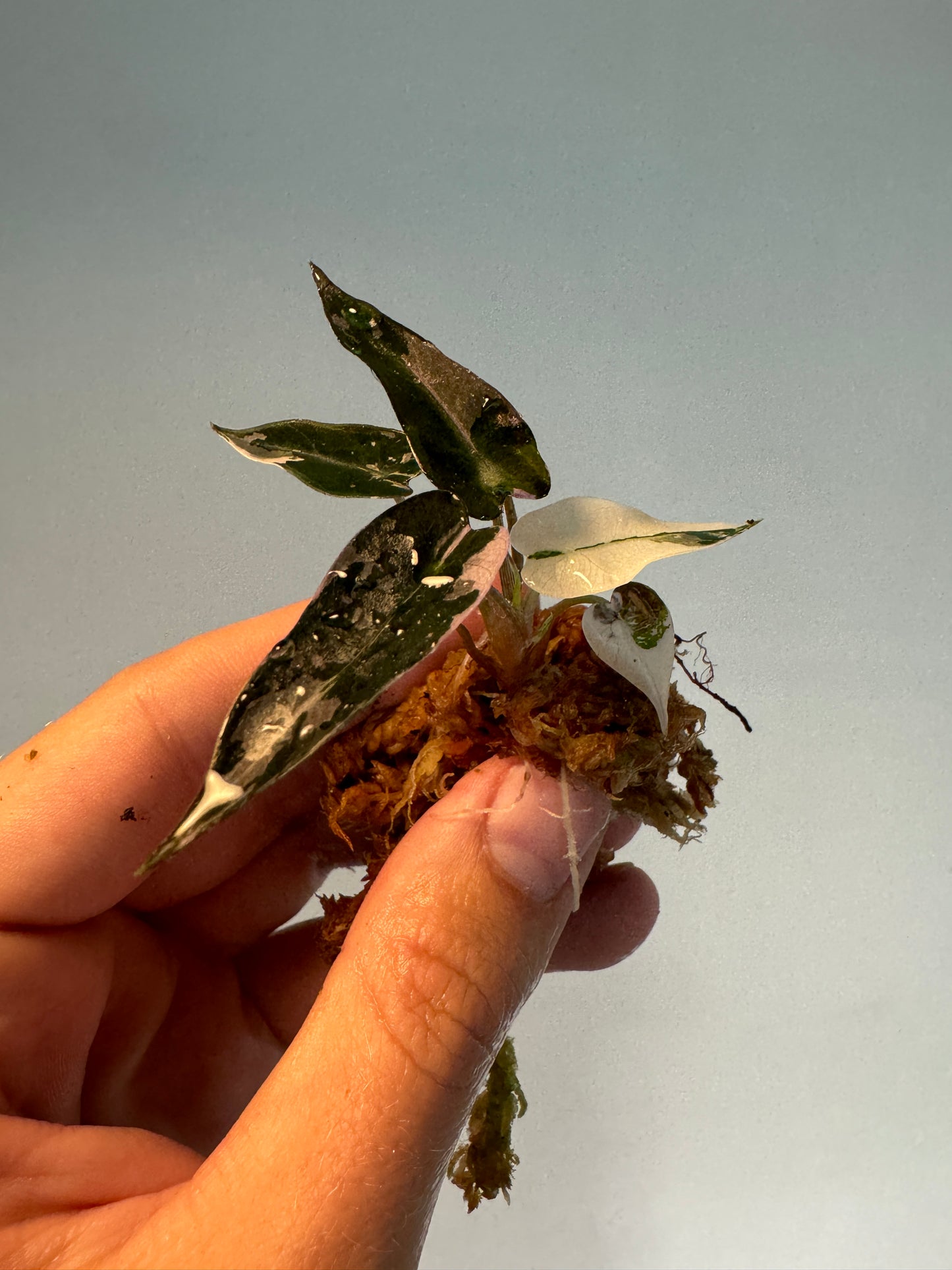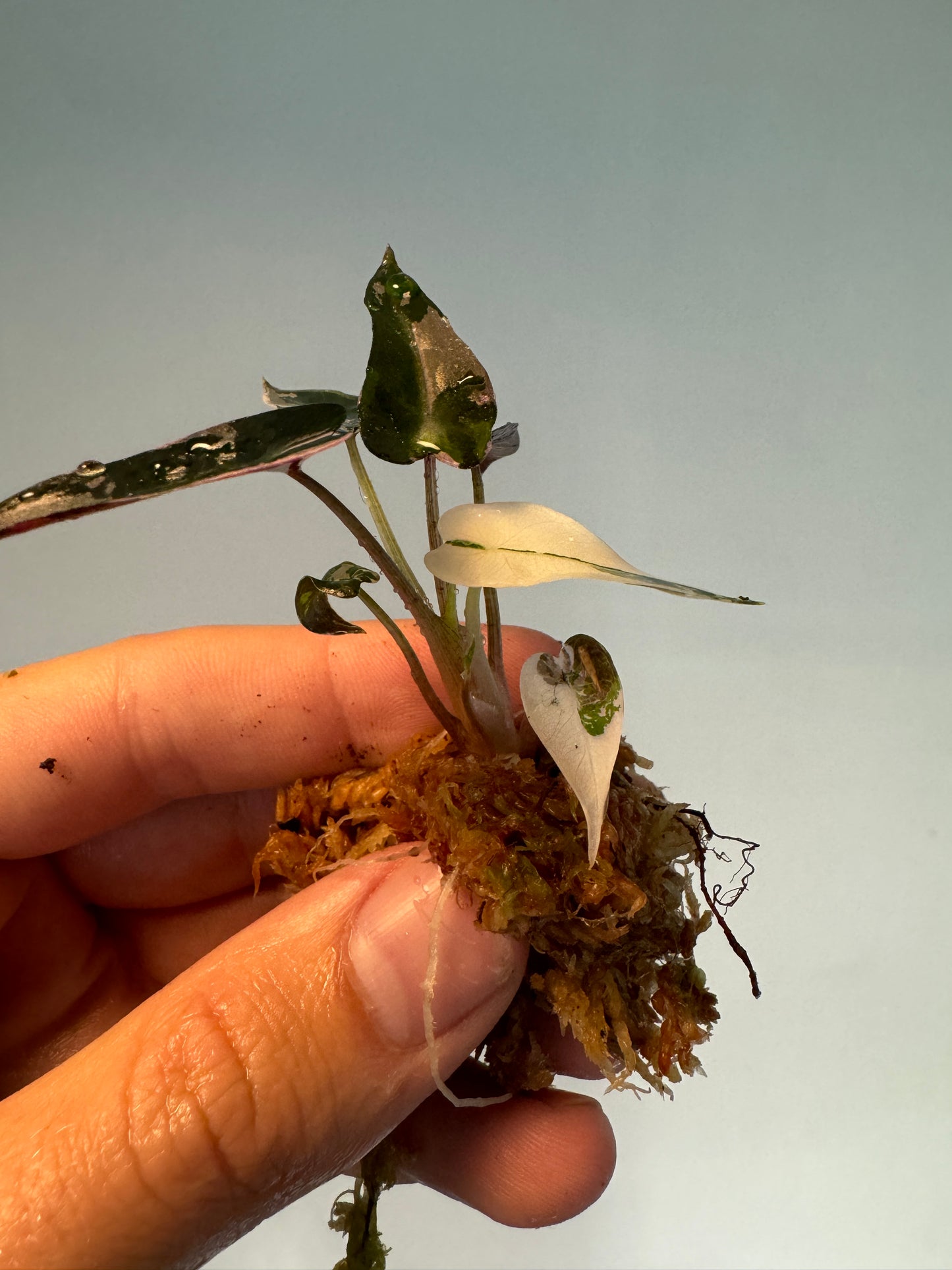Plantthatplant
Alocasia ’Bambino’ Pink Variegata
Alocasia ’Bambino’ Pink Variegata
Couldn't load pickup availability
The plant in the picture is not necessarily the one you get but all looks great! <3
Heritage and Origin
Alocasia 'Bambino' Pink Variegata is a captivating and rare variety of Alocasia known for its elegant, lance-shaped leaves with striking pink and green variegation. This plant is a cultivar of the Alocasia genus, which is native to the tropical rainforests of Southeast Asia. 'Bambino' is characterized by its compact size, making it an excellent choice for smaller indoor spaces. The pink variegation adds an extra layer of visual interest, making it a sought-after plant for collectors and houseplant enthusiasts.
Care Requirements in a Scandinavian Indoor Setting
Caring for Alocasia 'Bambino' Pink Variegata in a Scandinavian indoor environment requires some attention to detail to replicate the warm and humid conditions of its native habitat.
-
Light Requirements:
- Optimal Light: Alocasia 'Bambino' Pink Variegata thrives in bright, indirect light, which is essential for maintaining its vibrant pink and green variegation. In Scandinavian homes, where light levels can be lower during the winter months, place the plant near a south or west-facing window. However, avoid direct sunlight, which can bleach the variegation and scorch the leaves.
- Supplemental Lighting: During the darker seasons, consider using LED grow lights to supplement natural light. A full-spectrum light that closely mimics natural sunlight will help the plant stay healthy and retain its colorful foliage.
-
Temperature and Humidity:
- Temperature: This Alocasia prefers warm temperatures between 18-24°C (65-75°F). Scandinavian homes are generally well-insulated, but it is important to keep the plant away from cold drafts and heating sources that can cause fluctuations in temperature.
- Humidity: Alocasia 'Bambino' Pink Variegata thrives in high humidity, ideally between 60-80%. In the dry winter months common in Scandinavian climates, using a humidifier or placing the plant on a humidity tray filled with water and pebbles can help maintain the necessary moisture levels. Regular misting can also be beneficial, but be careful not to leave the leaves wet for extended periods, as this can lead to fungal issues.
-
Watering:
- Watering Schedule: Water the Alocasia 'Bambino' Pink Variegata when the top inch of soil feels dry to the touch. Use room-temperature water, and ensure that the pot has good drainage to prevent water from pooling at the bottom, which can lead to root rot.
- Watering Tips: During the growing season (spring and summer), the plant will need more frequent watering, but reduce the frequency in autumn and winter when growth slows. The key is to keep the soil evenly moist but never waterlogged.
-
Soil and Potting:
- Soil Mix: This Alocasia prefers a well-draining, loose soil mix. A mix of peat or coconut coir, perlite, and orchid bark provides the right balance of moisture retention and aeration, mimicking the plant's natural tropical environment.
- Repotting: Repot the plant every 1-2 years or when it becomes root-bound. Choose a pot only slightly larger than the current one to prevent the plant from being overwhelmed by too much soil, which can retain excess moisture.
-
Fertilization:
- Feeding: During the growing season, feed the plant every 4-6 weeks with a balanced, diluted liquid fertilizer. This will support healthy growth and enhance the vibrancy of the pink variegation. Reduce feeding during the colder months when the plant’s growth naturally slows.
-
Pest Control:
- Common Pests: Alocasia 'Bambino' Pink Variegata can be susceptible to pests like spider mites, aphids, and mealybugs, particularly in dry indoor environments. Regular inspection of the leaves, especially the undersides, is crucial for early detection.
- Prevention and Treatment: If pests are detected, treat the plant with insecticidal soap or neem oil. Maintaining higher humidity levels can also help prevent infestations, as many pests thrive in dry conditions.
Share










